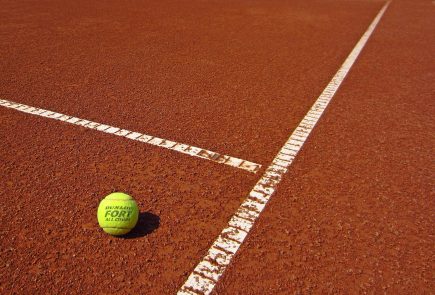Abortion rights, women of color, and LGBTQIA+ people are under attack. Pledge to join us in fighting for gender justice.
“Tennis Balls Are Expensive,” and Other Tales of Fighting for Athletic Opportunities for Girls
A Guest Post by Jan Bernstein
Jan Bernstein is a longtime supporter and champion of the National Women’s Law Center. Earlier this year she established the Joan and James H. Bernstein Fund in honor of her parents’ efforts to advocate for girls’ access to athletic opportunities and to ensure that the promise of Title IX is fully realized for girls nationwide.
 In 1973, I was a junior in a public high school in suburban northern New Jersey playing on the boys’ varsity tennis team. There was no girls’ tennis team, or any other girls’ team for that matter. Title IX, the landmark law that bans sex discrimination in federally funded schools and colleges, had just been enacted the year before. As the National Women’s Law Center began its national campaign to enforce Title IX, my parents began a grassroots movement to establish girls’ athletic teams at my high school.
In 1973, I was a junior in a public high school in suburban northern New Jersey playing on the boys’ varsity tennis team. There was no girls’ tennis team, or any other girls’ team for that matter. Title IX, the landmark law that bans sex discrimination in federally funded schools and colleges, had just been enacted the year before. As the National Women’s Law Center began its national campaign to enforce Title IX, my parents began a grassroots movement to establish girls’ athletic teams at my high school.
My parents challenged the status quo, which allocated 100 percent of education funding for sports to the boys. I rallied the students to sign petitions demanding girls teams, thereby rejecting the town’s defense that there was not significant interest by girls to play on competitive athletic teams. My parents openly challenged and confronted the discrimination against girls in sports with high school officials and the Board of Education. At one Board of Education meeting, an elected official told my father, “but tennis balls are expensive.” My father assured the board member that the cost of tennis balls was the same for girls as it was for boys.
Soon thereafter, the long-standing barriers to girls’ participation in athletics at our public high school fell. So, in 1973 for the first time, three girls’ teams were established, including a tennis team. This was my first introduction to what would be a lifetime of benefits I received by having the opportunity to play on a competitive sports team, including leadership, friendship, teamwork, discipline, and the importance of good health, just to name a few. Now, there are 13 girls’ athletic teams at that same public high school, with many state, regional, and some national champions from those teams. This living history is my parents’ legacy.
As for me, I am a member of that high school’s Athletic Hall of Fame, and the Tennis Hall of Fame at the University of Pennsylvania, which I note not out of hubris, but out of gratitude for the lessons of courage and change I was taught by my parents in their lifelong fight for gender equality and their belief that everyone deserves a fair chance in life. While a student at Penn, I was active in supporting equal opportunity for Penn women athletes, and as an alumna, I remain committed to the fight. I dedicate this continuing effort to my parents, and to the members of my Penn Tennis Team, who remain some of the best friends I hold dear today. Forty-one years later, we still affectionately refer to ourselves as “The Team.” We are still each other’s best support system, in good and bad times. I cannot imagine my life without these extraordinary women in it. I am lucky. I know that. There is still a need to help all those girls out there who have not yet had the opportunity to find their “Team.” The fight goes on. Game, Set, Match.




